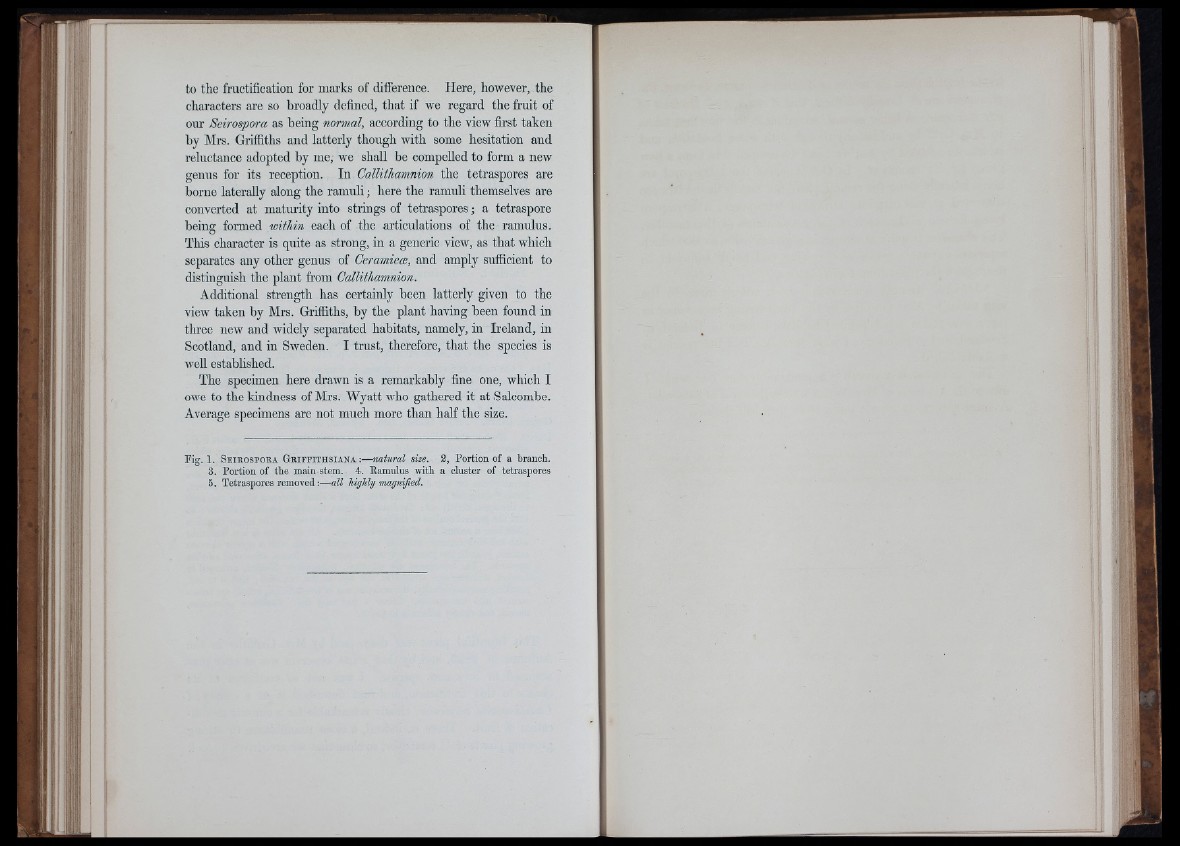
to the fructification for marks of difference. Here, however, the
characters are so broadly defined, that if we regard the fruit of
our Seirospora as being normal, according to the view first taken
by Mrs. Griffiths and latterly though with some hesitation and
reluctance adopted by me, we shall be compelled to form a new
genus for its reception. In Callithamnion the tetraspores are
borne laterally along the ramuli ; here the ramuli themselves are
converted at maturity into strings of tetraspores ; a tetraspore
being formed within each of the articulations of the ramulus.
This character is quite as strong, in a generic view, as that which
separates any other genus of Ceramieæ, and amply sufficient to
distinguish the plant from Callithamnion.
Additional strength has certainly been latterly given to the
view taken by Mrs. Griffiths, by the plant having been found in
three new and widely separated habitats, namely, in Ireland, in
Scotland, and in Sweden. I trust, therefore, that the species is
well established.
The specimen here drawn is a remarkably fine one, which I
owe to the kindness of Mrs. Wyatt who gathered it at Salcombe.
Average specimens are not much more than half the size.
Fig. 1. S e ik o s p o r a G r i f f i t h s ia n a :— natural size.
3. Portion of the main stem. 4. Kamulus with
5. Tetraspores removed:— all highly magnifi
, Portion of a branch,
cluster of tetraspores
'in